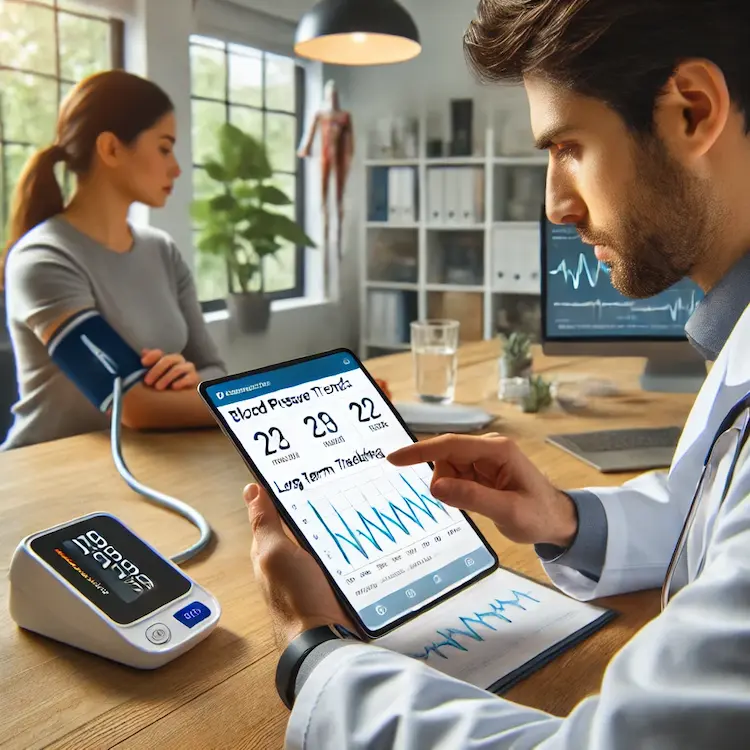Blood pressure monitoring is crucial for individuals managing hypertension, cardiovascular diseases, and general health. Accurate and long-term tracking of blood pressure trends can help prevent complications and improve treatment outcomes. Omron, a leader in medical technology, offers various digital blood pressure monitors, including the Omron RS3 and Omron X4, both of which provide memory storage for long-term data tracking.
This article provides a detailed comparison of the Omron RS3 and Omron X4, focusing on their memory storage capacity and long-term tracking capabilities. We will examine their features, benefits, and how they contribute to better health monitoring.
Tracking blood pressure trends over weeks or months helps identify patterns, detect anomalies, and adjust treatments accordingly. Devices with larger memory capacity allow users to store more readings, making it easier to monitor long-term changes.
Doctors rely on historical blood pressure data to identify trends and diagnose conditions like hypertension or white coat syndrome. A device with good memory storage eliminates the need for manual recording, ensuring accuracy and consistency in reporting.
Many households have multiple users monitoring their blood pressure. Blood pressure monitors with separate memory storage for multiple users allow individualized tracking, making them more efficient for families.
Modern blood pressure monitors sync with smartphone apps or cloud storage, enabling seamless data sharing with healthcare providers. Some models allow automatic transfer of readings, reducing human error in manual logging.

| Feature | Omron RS3 | Omron X4 |
|---|---|---|
| Memory Storage | 30 readings | 60 readings per user (2 users) |
| Multi-User Mode | Single user | Dual user |
| Smart Connectivity | No Bluetooth | Bluetooth with Omron Connect app |
| Data Sharing | Manual logging | Automatic sync via app |
| Display Type | LCD screen | Large, high-contrast LCD |
| Cuff Type | Wrist-based | Upper-arm cuff |
| Irregular Heartbeat Detection | Yes | Yes |
| Clinically Validated | Yes | Yes |
| Battery Life | Up to 300 readings | Up to 1,000 readings |
From this comparison, Omron X4 clearly offers superior memory storage with 60 readings per user for two users, while Omron RS3 stores only 30 readings for a single user. Additionally, the X4 features Bluetooth connectivity, allowing users to sync data for long-term analysis.
Compact and Portable – Ideal for users who prefer a wrist-based monitor for convenience.
Clinically Validated – Ensures accurate readings, making it a reliable choice for home use.
User-Friendly Interface – Simple controls make it easy to use for all ages.
Limited Memory Storage – Can only store 30 readings, which may not be sufficient for long-term tracking.
No Smart Connectivity – Users must manually record their readings.
Not Suitable for All Users – Wrist-based monitors may give less accurate readings for individuals with circulatory conditions.
Larger Memory Storage – Stores 60 readings per user for two users, making it ideal for long-term monitoring.
Bluetooth Connectivity – Syncs with the Omron Connect app, making data tracking and sharing easier.
Dual-User Functionality – Suitable for households with multiple people monitoring their blood pressure.
Upper-Arm Cuff – More accurate than wrist monitors, especially for users with circulation issues.
Less Portable – Bulkier than wrist monitors, making it less convenient for travel.
Higher Price Point – More expensive than the Omron RS3.
If memory storage and long-term tracking are your priorities, the Omron X4 is the clear winner. With 60 readings per user and Bluetooth connectivity, it allows for seamless tracking and analysis.
However, if you prefer a compact, wrist-based device for occasional monitoring, the Omron RS3 is still a reliable option.
![]()
For those who need comprehensive long-term tracking, the Omron X4 is the superior choice, thanks to its larger memory storage, Bluetooth connectivity, and dual-user capability. On the other hand, the Omron RS3 remains a good option for users who prioritize portability and simplicity.